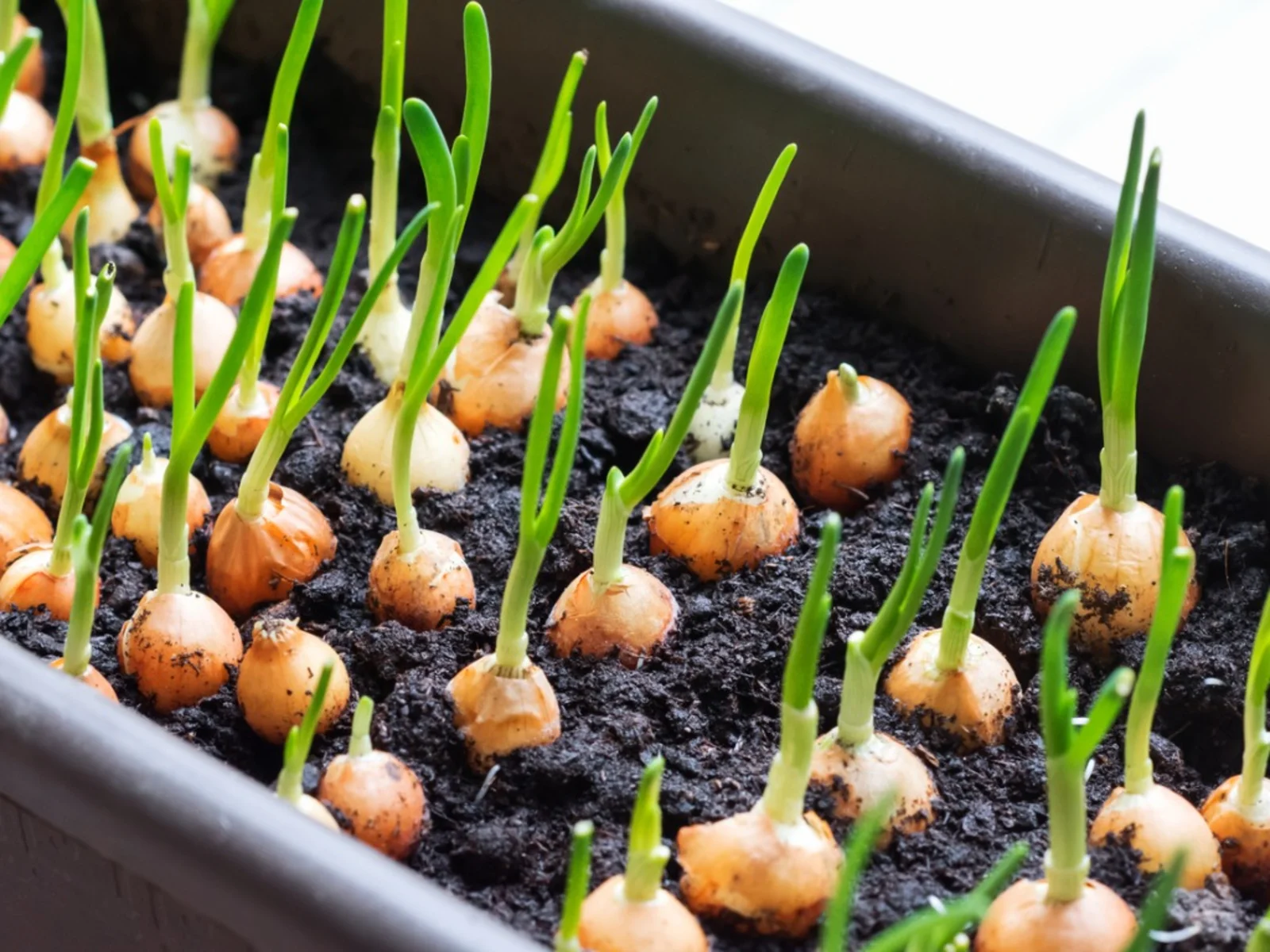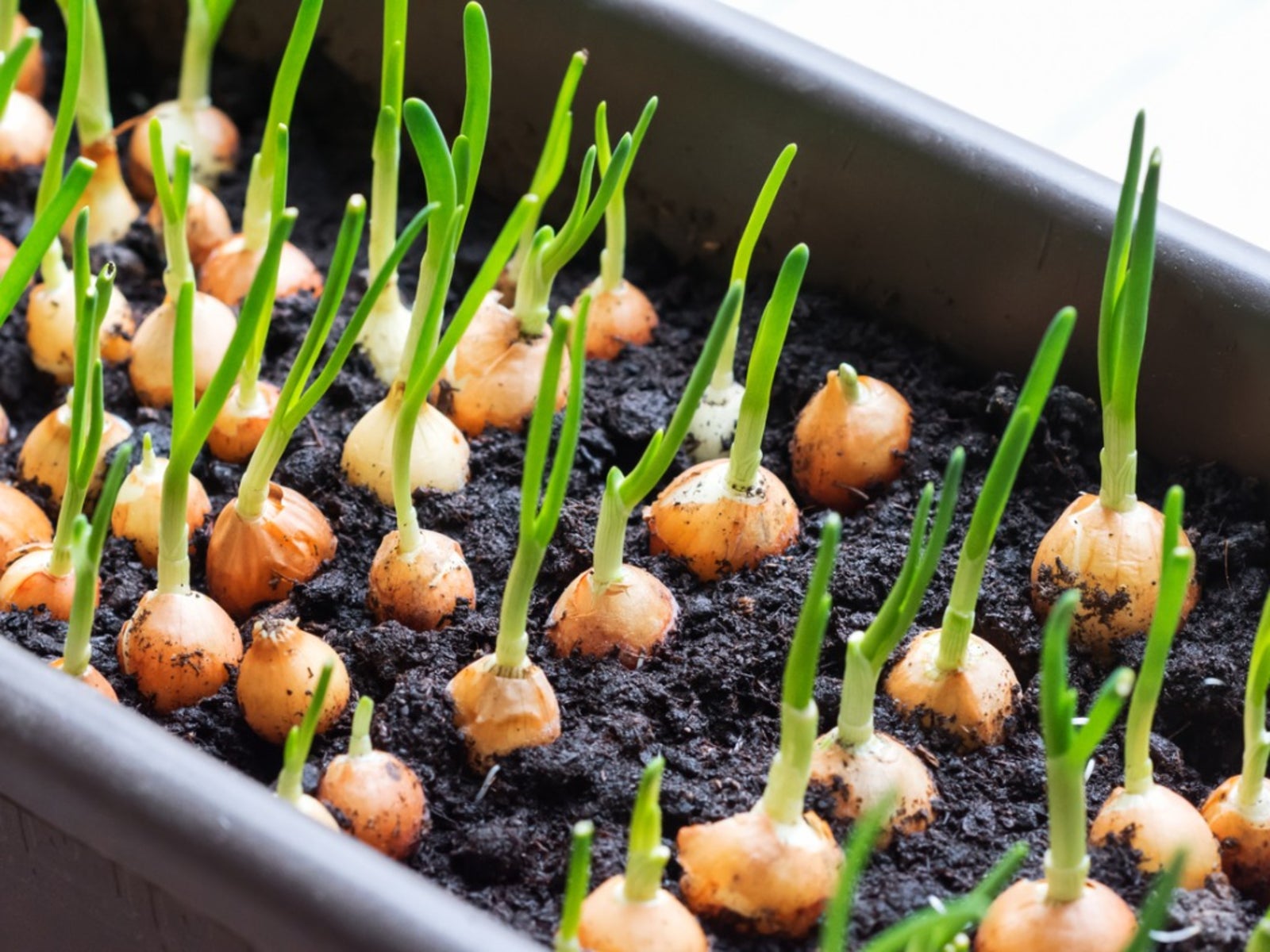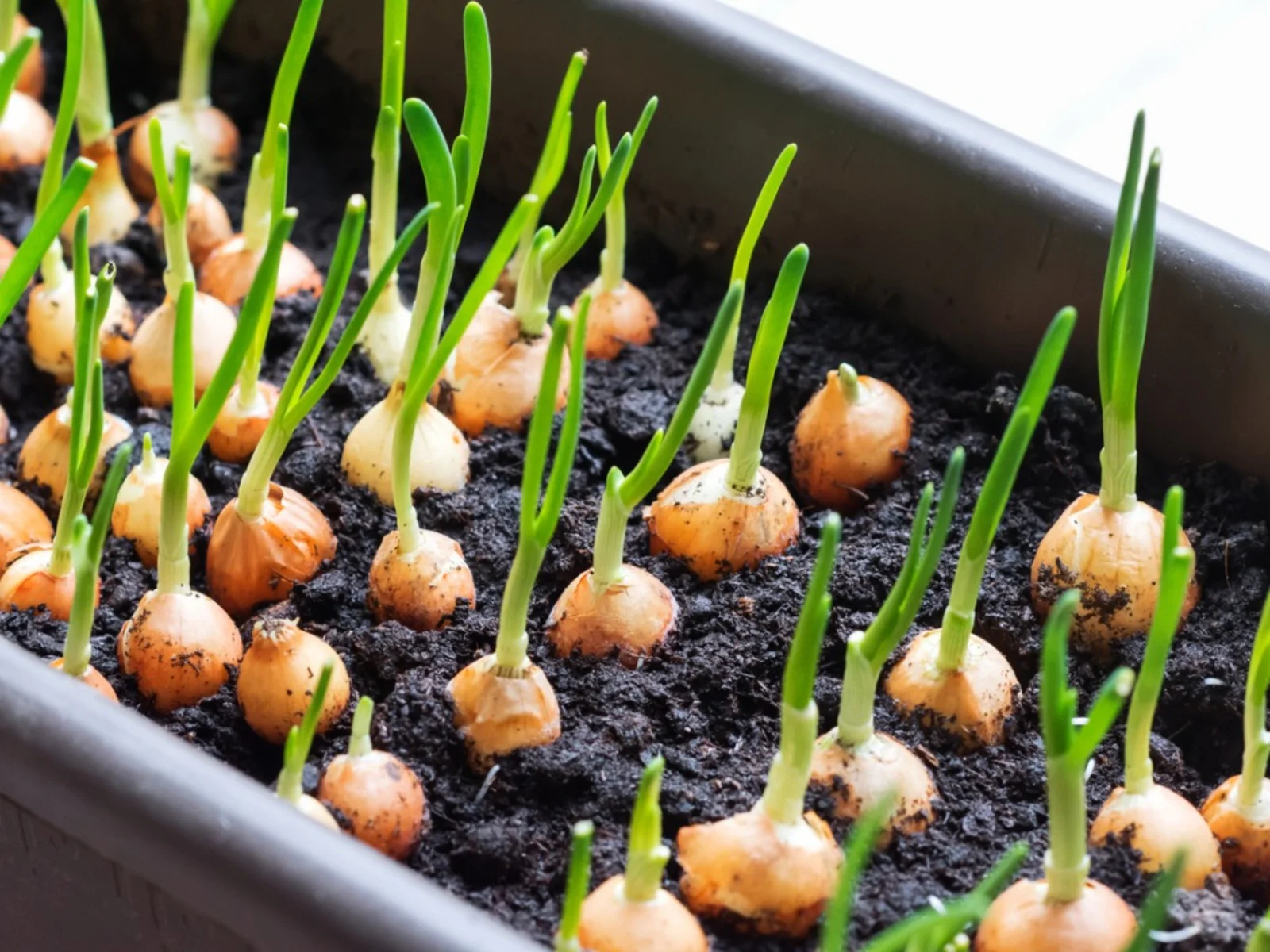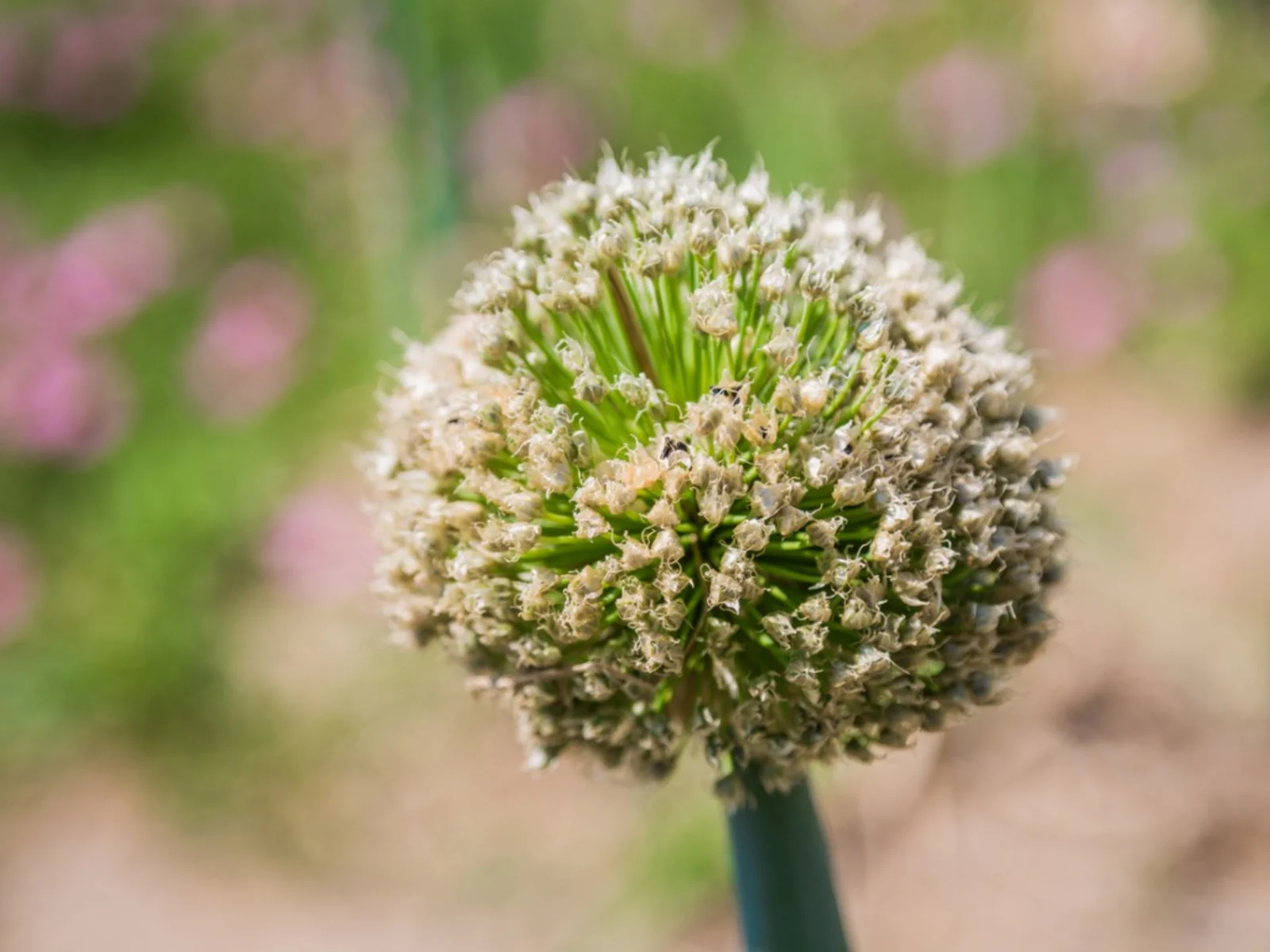Home>Gardening News and Trends>Latest News>Who Invented The Blooming Onion


Latest News
Who Invented The Blooming Onion
Published: January 11, 2024
Discover the fascinating history of the blooming onion and learn who invented this delicious appetizer. Stay updated with the latest news in the culinary world.
(Many of the links in this article redirect to a specific reviewed product. Your purchase of these products through affiliate links helps to generate commission for Chicagolandgardening.com, at no extra cost. Learn more)
Table of Contents
Introduction
The Blooming Onion is a popular appetizer that has become a beloved staple in many restaurants around the world. Its unique appearance and delicious taste have captivated the taste buds of food enthusiasts for decades. But have you ever wondered who invented this delightful dish?
The origins of the Blooming Onion can be traced back to the United States, where it gained popularity in the late 20th century. While there are several claims to its invention, one thing is for certain – this deep-fried masterpiece has become an iconic dish that satisfies cravings and brings people together.
In this article, we will delve into the intriguing history of the Blooming Onion, explore the different claims to its invention, and uncover the role played by Outback Steakhouse in its rise to fame. We will also discuss the various variations of this delectable appetizer and examine its enduring popularity and cultural impact.
From its humble beginnings to its present-day fame, the Blooming Onion has carved a special place in the culinary world. So, join us as we uncover the secrets behind this beloved dish and pay homage to the minds that brought it to our plates.
Origins of the Blooming Onion
The exact origins of the Blooming Onion are somewhat shrouded in mystery. While its invention is often attributed to one specific individual or restaurant, the true origins are likely a combination of creativity, experimentation, and culinary evolution.
It is believed that the Blooming Onion first made its appearance in the late 20th century in the United States. Deep-fried onions themselves have a long history, with variations like onion rings dating back centuries. However, it was the unique presentation and technique of the Blooming Onion that set it apart.
Some trace the origins of the Blooming Onion to a chef named Tim Gannon, who supposedly created the dish while working at a restaurant in Tampa, Florida in the 1980s. Gannon’s inspiration came from a traditional onion blossom recipe that he wanted to elevate to a new level. He experimented with different cutting techniques and frying methods to achieve the signature “blooming” effect, resulting in the iconic layered appearance and crispy texture.
Another claim to the invention of the Blooming Onion is attributed to a restaurant called The Colorado Steakhouse in Fort Collins, Colorado. According to this account, a chef named Jeff Rizenbergs developed the dish in the early 1970s as a way to make use of leftover onions. He cleverly sliced the onion in a way that resembled a blossom, and after deep-frying it, the Blooming Onion was born.
While these are the most well-known claims, it’s important to note that the true origins of the Blooming Onion may have involved multiple individuals and establishments. It is not uncommon for culinary creations to evolve through a series of adaptations and innovations, often without a clear-cut “inventor”.
The popularization of the Blooming Onion can be attributed in part to Outback Steakhouse, an Australian-inspired restaurant chain. Outback Steakhouse features the Blooming Onion as a signature dish and it has become synonymous with the restaurant’s brand. Their marketing efforts and widespread popularity helped to spread awareness of the dish and introduced it to a larger audience.
Overall, the origins of the Blooming Onion may be elusive, but its impact on the culinary world is undeniable. This appetizer has captured the hearts (and stomachs) of food lovers everywhere, and it continues to be a tantalizing treat enjoyed in restaurants and homes around the globe.
Claims to Invention
The invention of the Blooming Onion has sparked multiple claims from different individuals and restaurants, each asserting their own role in creating this iconic appetizer. While the true origin remains uncertain, these claims shed light on the ingenuity and culinary creativity that have contributed to the popularity of the Blooming Onion.
One prominent claim to the invention of the Blooming Onion is attributed to Tim Gannon, a chef who worked at a restaurant in Tampa, Florida. According to this account, Gannon came up with the idea for the Blooming Onion in the 1980s. He was inspired by a traditional onion blossom recipe but wanted to elevate it to a new level. Through experimentation and innovative cutting techniques, Gannon achieved the distinct blooming appearance and crispy texture that we know today.
Another claim to the invention of the Blooming Onion points to The Colorado Steakhouse in Fort Collins, Colorado. Allegedly, chef Jeff Rizenbergs developed the dish in the early 1970s. Seeking a creative solution for using up leftover onions, Rizenbergs devised a unique method of slicing the onion to resemble a blossom and then deep-frying it. This resulted in a visually striking and delicious appetizer that became a hit with customers.
Despite these well-known claims, it is important to recognize that the invention of the Blooming Onion may involve more than just a single individual or restaurant. Culinary innovations often arise through a collaborative process, with ideas and techniques building upon one another. The true origin story of the Blooming Onion may be a combination of these claims and other unknown contributions.
Furthermore, there may exist other lesser-known claims from chefs and restaurants across the United States who believe they played a significant role in the creation of the Blooming Onion. It is possible that different chefs were independently experimenting with onions and frying techniques, leading to the simultaneous emergence of similar dishes in different locations.
While the debate over the actual inventor of the Blooming Onion may continue, what is certain is that this appetizer has transcended its origin stories to become a beloved culinary icon. Its appeal lies not only in its intriguing appearance but also in the delicious combination of crispy, golden petals and the accompanying dipping sauce.
Whether it was the result of a single chef’s ingenuity or a collaborative effort between multiple culinary experts, the Blooming Onion has found its place on menus around the world, tantalizing taste buds and sparking joy in those lucky enough to experience it.
The Role of Outback Steakhouse
When it comes to the popularization of the Blooming Onion, no discussion would be complete without mentioning the significant role played by Outback Steakhouse. This Australian-inspired restaurant chain has been instrumental in introducing the Blooming Onion to a worldwide audience and making it a staple of their menu.
Outback Steakhouse first opened its doors in Tampa, Florida in 1988. It was here that they embraced the Blooming Onion as a signature dish, featuring it prominently on their menu. The restaurant’s founders recognized the unique appeal of the Blooming Onion and saw its potential to set them apart from other dining establishments.
Through clever branding and marketing strategies, Outback Steakhouse successfully popularized the Blooming Onion. They touted it as an iconic appetizer, leveraging its visual appeal and distinctive flavor to entice customers. The dish became synonymous with the Outback Steakhouse brand, leading to associations of indulgence, fun, and sharing with friends and family.
Outback Steakhouse went beyond simply serving the Blooming Onion on their menu. They also put effort into perfecting the recipe and presentation, ensuring that each blooming onion was cooked to perfection and bursting with delicious flavors. Consistency became a hallmark of their brand, and customers knew they could rely on Outback Steakhouse for a satisfying Blooming Onion experience.
Another factor that contributed to the role Outback Steakhouse played in the rise of the Blooming Onion was their rapid expansion as a restaurant chain. With numerous locations across the United States and abroad, Outback Steakhouse was able to reach a wide audience and introduce the Blooming Onion to new regions and cultures.
Outback Steakhouse’s success in popularizing the Blooming Onion also had a ripple effect throughout the culinary world. As other restaurants witnessed the demand and fascination with this unique appetizer, they began adding their own versions of the Blooming Onion to their menus. This further propelled the dish into mainstream popularity, ensuring its place as a staple in appetizer lists across restaurants of all types.
While the true origins of the Blooming Onion may have been attributed to various claims, it is undeniable that Outback Steakhouse played a crucial role in bringing this delectable dish to the forefront of the culinary scene. Their branding efforts, consistent quality, and expansive reach have solidified the Blooming Onion’s place in the hearts (and stomachs) of countless individuals around the world.
Variations of the Blooming Onion
While the classic Blooming Onion remains a perennial favorite, variations of this appetizer have emerged, allowing for creative twists on the original concept. These variations highlight the adaptability and versatility of the dish, appealing to different tastes and culinary preferences.
One popular variation of the Blooming Onion is the “Bloomin’ Cheese Bread.” This rendition takes the concept of a blooming onion and combines it with the cheesiness of a bread loaf. The bread is sliced and spread open, allowing for the addition of various cheeses, herbs, and seasonings. The result is a savory and gooey delight that delivers a unique twist to the traditional Blooming Onion experience.
Another variation is the “Blooming Sweet Onion.” This version takes advantage of the natural sweetness of certain onion varieties, such as Vidalia or Walla Walla onions. These onions are milder and sweeter in flavor compared to regular yellow onions. By using sweet onions, the Blooming Onion becomes a delightful blend of sweetness and crunch, providing a contrasting flavor profile to the original.
For those who prefer a spicier kick, the “Buffalo Blooming Onion” is a popular choice. This variation incorporates spicy buffalo wing sauce into the dipping sauce and adds a touch of heat to each bite. The combination of the crispy fried onion and the tangy spiciness of the sauce creates a mouthwatering sensation that is sure to satisfy heat seekers.
Going a step further, some culinary innovators have experimented with non-traditional ingredients to create vegetarian and vegan versions of the Blooming Onion. These variations utilize plant-based ingredients such as cauliflower or zucchini to achieve a similar blooming effect. These vegetarian-friendly options provide a delightful alternative for those seeking a meat-free version of the iconic appetizer.
The possibilities for variations on the Blooming Onion are nearly endless. Chefs and home cooks alike have embraced their creativity, experimenting with different seasonings, batters, and even fillings. From adding bacon and cheese to incorporating unique dipping sauces, these variations offer a personalized touch that elevates the Blooming Onion to new heights.
Additionally, restaurants often put their own spin on the Blooming Onion by adding their signature flavors or incorporating regional ingredients. This allows for a diverse range of interpretations across different cultures and cuisines, ensuring that there is a Blooming Onion variation to suit every palate.
The ever-evolving nature of the Blooming Onion showcases its adaptability as a culinary concept. It continues to inspire ingenuity and experimentation, proving that even a beloved classic can be reinvented in new and exciting ways. Whether you prefer the original rendition or are eager to try one of the many variations, the Blooming Onion remains a versatile and enticing appetizer that never fails to impress.
Popularity and Cultural Impact
The Blooming Onion has achieved remarkable popularity and left a lasting cultural impact since its inception. This appetizer has become synonymous with indulgence, social gatherings, and a symbol of delicious comfort food.
Part of the Blooming Onion’s allure lies in its unique presentation. The onion’s petals, delicately sliced and deep-fried to perfection, create an impressive visual display that never fails to capture attention. The anticipation of unraveling the layers and dipping them into the accompanying sauce adds an element of excitement to the dining experience.
Outback Steakhouse, with its widespread recognition and global reach, played a pivotal role in establishing the Blooming Onion as an iconic appetizer. Through their marketing efforts, the dish gained a reputation as a must-try item, drawing people to explore its flavors and savor the one-of-a-kind dining experience.
The cultural impact of the Blooming Onion extends far beyond Outback Steakhouse. It has become a staple in many restaurants worldwide, finding its way onto menus of different cuisines and dining establishments. Its presence is not limited to upscale restaurants but can often be found in casual dining chains, sports bars, and even food trucks.
The popularity of the Blooming Onion has been fueled by its versatility and ability to cater to various dietary preferences. Non-vegetarian versions feature crispy, golden onion petals paired with savory dipping sauces, while vegetarian and vegan alternatives showcase innovative uses of plant-based ingredients, expanding the options available to a wider audience.
Furthermore, the Blooming Onion has become a favorite appetizer for sharing amongst friends and family. Its communal nature promotes a sense of togetherness, as people gather around the table to unravel and enjoy the crispy layers. This form of shared dining experience has contributed to the cultural significance of the Blooming Onion, as it has become intertwined with memorable moments and celebrations.
The popularity of the Blooming Onion has also extended into popular culture. It has been featured in various cooking competitions and food-related television shows, further propelling its fame and igniting curiosity among viewers to try this iconic dish. Recipes and DIY videos have proliferated online, allowing home cooks to recreate the Blooming Onion in their own kitchens.
Moreover, the Blooming Onion has influenced other aspects of the culinary world. Chefs and food enthusiasts have drawn inspiration from its unique presentation and technique, using similar approaches to create innovative dishes with different ingredients. This demonstrates the far-reaching impact of the Blooming Onion, as it continues to inspire and evolve culinary creativity.
All in all, the Blooming Onion has become a cultural phenomenon, loved by food enthusiasts around the world. Its visual appeal, tantalizing flavors, and versatility have made it a staple on menus and a topic of conversation in food circles. Whether enjoyed at a restaurant, a special event, or in the comfort of one’s home, the Blooming Onion never fails to leave a lasting impression, cementing its place as an iconic and beloved appetizer.
Conclusion
The Blooming Onion has undoubtedly become more than just an appetizer – it is a cultural icon that has captured the hearts (and taste buds) of people around the world. While its exact origins may be shrouded in mystery and claims to its invention may be disputed, one thing is certain – the Blooming Onion has left an indelible mark on the culinary scene.
From its humble beginnings as a creative twist on a traditional onion blossom recipe to its current status as a beloved item on menus in various restaurants, the Blooming Onion has evolved and adapted over the years. Its popularity has soared, thanks to Outback Steakhouse’s role in popularizing this delectable dish and their strategic marketing efforts.
In addition to its visual appeal and satisfying crunch, the Blooming Onion has made its way into popular culture, appearing in cooking shows, social media feeds, and even DIY videos. Its versatility has also allowed for creative variations that cater to different tastes, dietary preferences, and regional cuisines.
Moreover, the Blooming Onion has forged emotional connections by fostering shared dining experiences and bringing people together. It has become a symbol of indulgence, celebration, and joyful moments spent with loved ones.
Through its cultural impact, the Blooming Onion has influenced the culinary world and sparked the imaginations of chefs and home cooks alike. Its creativity and adaptability continue to inspire new culinary creations and innovations.
Ultimately, the Blooming Onion has transcended its individual claims to invention and has become a universally recognized and beloved appetizer. Whether enjoyed at a restaurant or prepared at home, it remains a tantalizing treat that never fails to impress and satisfy.
So, the next time you have the opportunity to dig into a Blooming Onion, revel in the layers of flavor, admire its impressive presentation, and appreciate the culinary minds that have brought this legendary dish to your plate.










